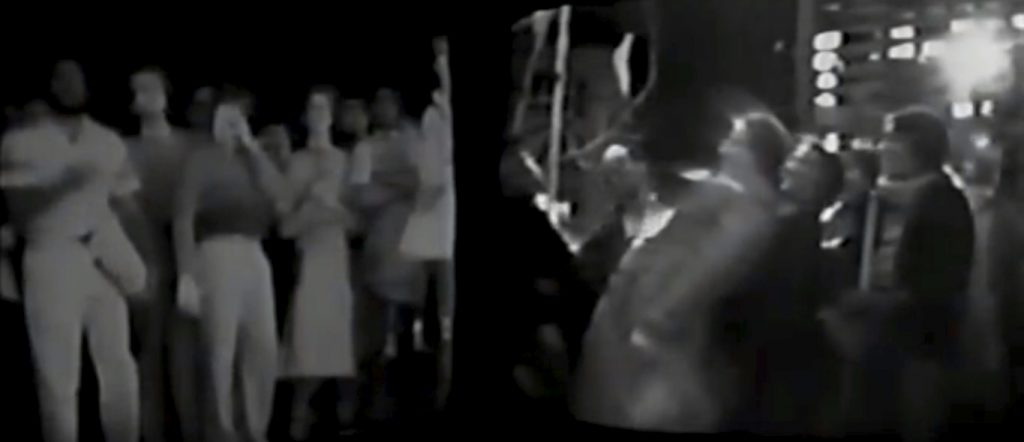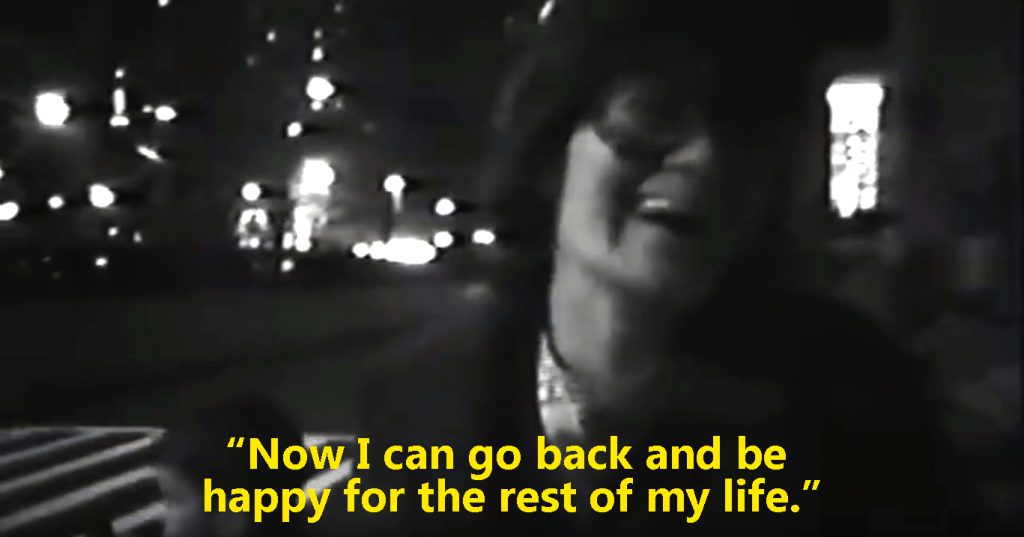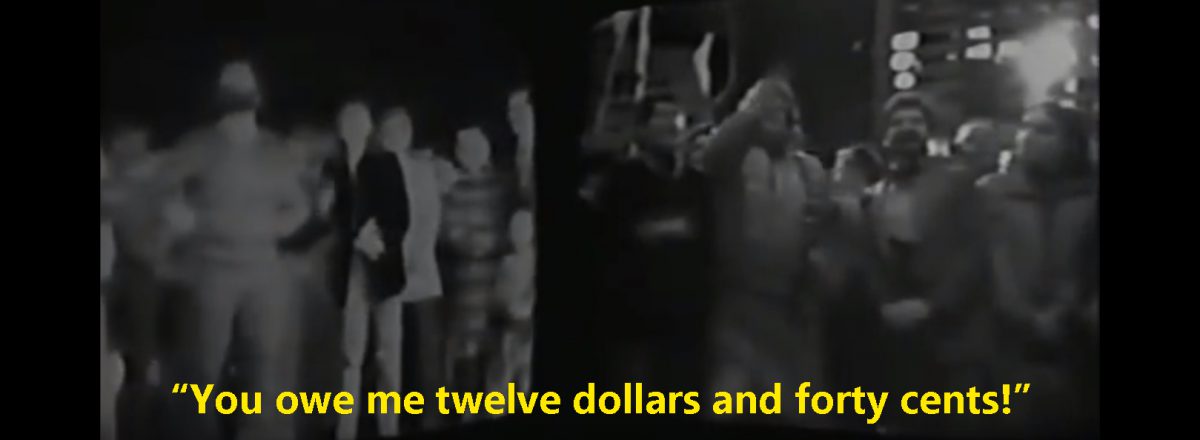
If I imagined that I am living in 1980 where the best computer I could ever purchase(if I am even rich enough) are only running on MS-DOS operating system, a period which the first computer that runs graphical user interface only appeared 3 years later(Apple Lisa), and I heard that I could talk to someone else 4800km away- face to face, real-time, I will not believe it until I went down and have the random someone from 4800km away replied to what I said.
This is how insanely amazing I think that the work Hole-In-Space was, this work by artists Kit Galloway and Sherrie Rabinowitz was so forward in the time where the audience(also became participant) were not prepared for it and since during the 3 evening of the work, there was no signs or sponsor, no explanation was given to the work, it definitely struck curiosity within the passerby thinking :”Wait, What is this? is this a screen? *stares at someone and he stares back* Hmmm.. *Wave and the person wave back* HOLLLLLYYYYY SH*TTTTTT ITS MAGIC!!!!”
This made me wanted to see how the work was back then and I found a Youtube video of the work which was really interesting in how people communicate through the work.
“Its just, umm, television like telephone, right? …. What a revolution it’s gonna be eh?”
– Random guy from the video A Hole in Space LA-NY, 1980 — the mother of all video chats (8:40)
People were singing, playing charades, finding their family or friends. – Playing charades through the work. From the video A Hole in Space LA-NY, 1980 — the mother of all video chats (13:20)
– Playing charades through the work. From the video A Hole in Space LA-NY, 1980 — the mother of all video chats (13:20)
I think that the fact that the work was placed there for only 3 days with no explanation was just right because on the second day, there was news reporting and on the third day, people were calling their family or friends and asked to “meet-up” over the Hole-in-space this escalated to a big crowd holding signs shouting and screaming, and the whole situation started to get chaotic. The Hole-in-space has the power to bring people closer psychologically(definitely not physically), family and friends saw long lost friend, strangers interacted with each other they normally wouldn’t and this was evident in the reading Welcome to the “Electronic Cafe International”
“Los Angeles’s Korean community and black community traditionally are at odds with each others. As they met and got to know each other through the network, they wanted to visit each other!”
Welcome to the “Electronic Cafe International (Page 349)
That people could gain understanding through meeting in the third space where people could react to each other. Seeing each other face in real time was essential in people opening up due to the fact that they know they are protected from harm however in the reading,
“Still, a person is offended when the virtual-space hand “touches” body part that wouldn’t be touched normally “in the flesh.” In virtual space, we learn the extent to which we “own” our body image”
Welcome to the “Electronic Cafe International (Page 347)
This made me goes to deep thought that since our virtual image are just a group of pixels that formed on the screen, therefore “our” virtual image does not exactly belongs to us, but to the owner of the screen, but is that ethically correct? Just because that these pixels grouped together to look like me and I will go”This is me” while pointing on the screen, but are they really me? Human’s way of possession are too weird.
Back to the topic, I think that Hole-in-space was an amazing work which turns all the viewer into a participant and through it, the interaction between the first space and the third space became a part of the art as people not only talked to people 4800km away, they also talk to those who were beside them and formed a connection due to Hole in space. These participants enable Hole-in-space to transform into a platform for collaborative performance art where all viewer became the art work, without their participation, the Hole-in-space would just be a piece of work that film people walking past the street in a window.
Lastly, I think that Hole-in-space enable people to see the potential in technology which shrinks the distance between people when used appropriately. It filled people with hopes in the future’s technology. – Contented Participant. From the video A Hole in Space LA-NY, 1980 — the mother of all video chats (26:46)
– Contented Participant. From the video A Hole in Space LA-NY, 1980 — the mother of all video chats (26:46)

Wonderful essay, and you demonstrate how exciting and playful networked communications can be. You also made an astute comment about the fact that people were interacting with others in both the first space and the third space, creating a more hybrid interaction between the various dimensions of the real and the virtual. Given that this was one of the very first video chat, if not the first, it is quite astounding that this type of interaction, joining public spaces in the third space, is not more common. Despite the fact that Hole in Space was created almost forty years ago, it is still way ahead of its time.